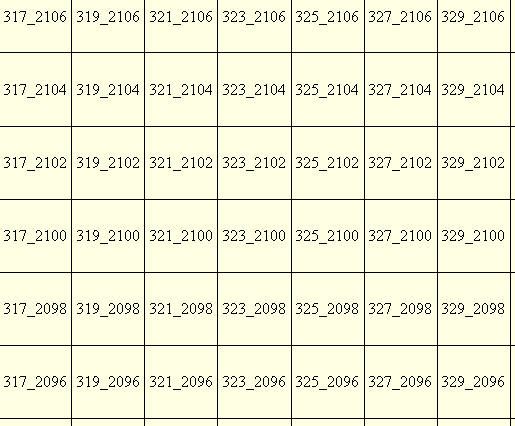
Coordinate Converter Borneo Rso Stock
My thinking was, Borneo RSO is listed as -meter East and 225554555-meter North so how hard could it be to convert it to how many degree East & North? Seems simple to me but unfortunately it's beyond me. RSO projection is now viable between Geocentric RSO coordinates and GDBD2009 coordinates. With GDBD2009, geodetic coordinates of a point determined using GPS by a cadastral surveyor can now be projected directly to their related geocentric RSO plane coordinate values without converting.
• Rumjuankiat, Kittaporn; Perez, Rodney Horanda; Pilasombut, Komkhae; Keawsompong, Suttipun; Zendo, Takeshi; Sonomoto, Kenji; Nitisinprasert, Sunee 2015-06-01 Three bacteriocins from Lactobacillus plantarum KL-1 were successfully purified using ammonium sulfate precipitation, cation-exchange chromatography and reverse-phase HPLC. The bacteriocin peptides KL-1X, -1Y and -1Z had molecular masses of 3053.82, 3498.16 and 3533.16 Da, respectively. All three peptides were stable at pH 2-12 and 25 °C and at high temperatures of 80 and 100 °C for 30 min and 121 °C for 15 min. However, they differed in their susceptibility to proteolytic enzymes and their inhibition spectra. KL-1Y showed broad inhibitory activities against Gram-positive and Gram-negative bacteria, including Salmonella enterica serovar Enteritidis DMST 17368, Pseudomonas aeruginosa ATCC 15442, P. Aeruginosa ATCC 9027, Escherichia coli O157:H7 and E.
Coli ATCC 8739. KL-1X and -1Z inhibited only Gram-positive bacteria. KL-1X, KL-1Y and KL-1Z exhibited synergistic activity.
The successful amino acid sequencing of KL-1Y had a hydrophobicity of approximately 30% and no cysteine residues suggested its novelty, and it was designated 'plantaricin KL-1Y'. Plantaricin KL-1Y exhibited bactericidal activity against Bacillus cereus JCM 2152(T). Compared to nisin, KL-1Y displayed broad inhibitory activities of 200, 800, 1600, 800, 400 and 400 AU/mL against the growth of Bacillus coagulans JCM 2257(T), B. Cereus JCM 2152(T), Listeria innocua ATCC 33090(T), Staphylococcus aureus TISTR 118, E.
Coli O157:H7 and E. Coli ATCC 8739, respectively, whereas nisin had similar activities against only B. Coagulans JCM 2257(T) and B.

Cereus JCM 2152(T). Therefore, the novel plantaricin KL-1Y is a promising antimicrobial substance for food safety uses in the future. • Soderstrom, Ken; Alalawi, Ali KLFromRecordingDays allows measurement of Kullback-Leibler ( KL) distances between 2D probability distributions of vocal acoustic features. Greater KL distance measures reflect increased phonological divergence across the vocalizations compared. The software has been used to compare *.wav file recordings made by Sound Analysis Recorder 2011 of songbird vocalizations pre- and post-drug and surgical manipulations. Recordings from individual animals in *.wav format are first organized into subdirectories by recording day and then segmented into individual syllables uttered and acoustic features of these syllables using Sound Analysis Pro 2011 (SAP). KLFromRecordingDays uses syllable acoustic feature data output by SAP to a MySQL table to generate and compare 'template' (typically pre-treatment) and 'target' (typically post-treatment) probability distributions.
These distributions are a series of virtual 2D plots of the duration of each syllable (as x-axis) to each of 13 other acoustic features measured by SAP for that syllable (as y-axes). Differences between 'template' and 'target' probability distributions for each acoustic feature are determined by calculating KL distance, a measure of divergence of the target 2D distribution pattern from that of the template. Adobe photoshop plugins. KL distances and the mean KL distance across all acoustic features are calculated for each recording day and output to an Excel spreadsheet. Resulting data for individual subjects may then be pooled across treatment groups and graphically summarized and used for statistical comparisons. Because SAP-generated MySQL files are accessed directly, data limits associated with spreadsheet output are avoided, and the totality of vocal output over weeks may be objectively analyzed all at once. The software has been useful for measuring drug effects on songbird vocalizations and assessing recovery from damage to regions of vocal motor cortex.